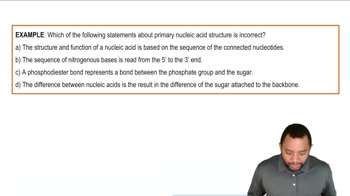Write the balanced chemical equation for the reaction of each of the following carboxylic acids with KOH:
b. 2-methylbutanoic acid
 Verified step by step guidance
Verified step by step guidance Verified video answer for a similar problem:
Verified video answer for a similar problem:


 1:9m
1:9mMaster Acid-Base Reactions Concept 1 with a bite sized video explanation from Jules
Start learning